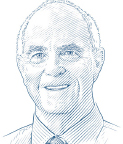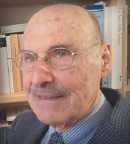
James O. Armitage, MD, FASCO
For many, the way things are when you learn about them is assumed to be the way things have always been. For example, antibiotics are wonderful—but if you were practicing medicine when penicillin was discovered, it would have seemed like a miracle. For most of us, there have always been chemical treatments for cancer that benefited some patients, ASCO has long had a major role in disseminating knowledge, and medical oncology has been a specialty recognized by the American Board of Internal Medicine.
The truth of the matter is that these things did not just happen overnight; they required a huge amount of effort. The history of medical oncology becoming a subspecialty of internal medicine was fraught with challenges. Surgeons and radiation oncologists once delivered most of the “medical” care for patients with cancer. The development of effective chemical therapies for patients with cancer made the specialty of medical oncology possible. Early examples include the discovery of methotrexate benefiting patients with leukemia, the use of alkylating agents to treat different cancers, and the effectiveness of hormonal therapy in breast cancer.
Steadfast Resistance
Even so, many in internal medicine did not accept the idea of medical oncology as a recognized subspecialty. One famous chair of internal medicine said that medical oncologists were charlatans taking advantage of patients and had nothing to offer. He vowed that they would never practice in his department.
One of the early ASCO presidents told me why the ASCO Annual Meeting is scheduled at the time of year it is. The major internal medicine meeting at that time would not accept papers about medical oncology, so the founders of ASCO planned their meeting for the same time. The first ASCO meeting was in 1965, and there were approximately 70 attendees. Board certification in medical oncology did not become available until 1973.
Medical Oncology in Europe
The evolution of medical oncology in Europe has its own exciting history. It was not too long ago that letters to the editor in The Lancet argued that there was no need for this specialty and that radiation oncologists alone could care for patients with cancer.
It is important for all of us, including our younger colleagues, to understand how we got to where we are. It is also important to recognize the heroes who got us here as role models to emulate for those who follow.
The article by Drs. Monfardini and Balducci in this issue of The ASCO Post tells us about the history of our specialty in Europe. It is interesting, well written, and will help us remember many of the extraordinary people who got us this far.
Dr. Armitage is the Joe Shapiro Professor of Medicine at the University of Nebraska Medical Center and past president of both the American Society of Clinical Oncology and the American Society of Blood and Marrow Transplantation.
Disclaimer: This commentary represents the views of the author and may not necessarily reflect the views of ASCO or The ASCO Post.



